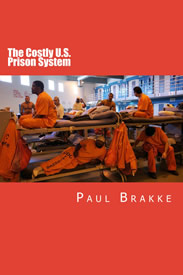Liberals are trying to do virtually anything to show that immigrants do not increase crime, and that cities are really safer when immigrants move there. They even trotted out a new study from the Marshall Project, to prove this contention. The study was featured on an Easter television report purporting to show that there is no correlation between the increase of immigrants in a very large number of individual U.S. cities and an increase in violent crime.
The study argues that despite conservatives’ claim that immigrants are violent criminals, the facts show this claim is a myth. However, the study is flawed because it fails to consider other data that undermine the conclusion which liberals have attempted to draw from it, as I discovered in analyzing the study. The criminal immigrant is no myth; it is true, as I will demonstrate.

First, let’s look at the study, which has valid data for what it actually shows. This extensive study examined changes in both the immigrant population and violent crime in 200 U.S. cities from 1980 to 2016. The study surveyed both large and small cities all over the U.S. The data were gathered by a collaboration of investigators at four universities led by a sociologist at the State University of New York at Buffalo.
The most newsworthy conclusion of the study was that “in 136 metro areas, almost 70 percent of those studied, the immigrant population increased between 1980 and 2016 while crime stayed stable or fell.” In the remaining metro areas, crime and immigration both increased, although even in these cities, immigration generally increased far more than crime.
I have no reason to doubt the data or the lack of correlation between increased immigration and violent crime. The results appear compelling, particularly since I use correlation analysis myself. I know it is hazardous to assign causation when two factors in a study correlate with one another. For instance, a correlation may occur when two unrelated events happen coincidentally at the same time or when they both occur due to a prior event that causes them both. In neither case would it be correct to conclude that one of the two correlated events caused the other.
On the other hand, an absence of correlation between two events can result in one incorrectly assuming that one thing does not cause another — such as in this case concluding that immigration does not increase violent crime.
Liberals have based their conclusion that immigrants have a low crime rate based on the absence of a correlation showing an increase in crime when immigrants come to a city. However, other equally valid data demonstrate that crime increases for a certain subset of the immigrant population – namely younger illegal immigrants 18-35, who are more likely to be involved in crimes, particularly in drug trafficking.
So how did the liberals get it so wrong, since there are just a few ways that their conclusion would not be justified. One incorrect conclusion might arise if increases in immigrants occur but still be so small that they do not contribute significantly to violent crime. However, this is unlikely to be a factor, since violent crime actually decreased markedly in many cities over this time. Therefore, either the presence of more immigrants decreased crime or something else did.
That other possibility is that some other factors were much more important than immigration in causing the decrease in crime. Most importantly, violent crime decreased very significantly throughout the U.S. from 1980 to the present. This had nothing to do with more immigrants, legal or illegal, coming to a city. As to what caused this decrease in crime, there is no clear consensus among experts, although as discussed in previous blogs and books, it is likely that increased incarceration played a role in decreasing crime, particularly after 1992.3, This might have been a major contributing factor by getting criminals of any age and background off the streets.
Accordingly, the most valid comparison would be to compare the violent crime rates in a city which increased its proportion of immigrants and the same city if it had not increased its immigrants. Unfortunately, this is not possible, since one can’t compare a situation which already occurred with a situation which did not actually happen.
Another approach might be to compare crime rates between cities that had increased their proportion of immigrants and those cities that had not and look at the number of illegal immigrants in different age groups in the two sets of cities.
This might show that the crime rate increased in the cities which had an increased growth in the younger illegal immigrants, as would be expected, given the many studies that have shown an increase in crime in this age group. An influx of younger illegal immigrants might be expected to lead to an increase in certain types of crimes associated with this group, such as drug trafficking and murder and assaults due to gang wars.
Unfortunately, the data on immigrant age may not be available. At the same time, any comparison between cities needs to take into consideration other factors that might affect the crime rates, because these rates vary so markedly from one city to another.
Thus, liberals are incorrect to claim that immigrants do not increase crime, since a lack of causation cannot be inferred from the correlation that they used. Rather, data show that illegals add to crime rates, if only because their younger age makes them more prone to crime.
I have written more extensively about immigration issues in my book: Dealing with Crime by Illegal Immigrants and the Opioid Crisis.




